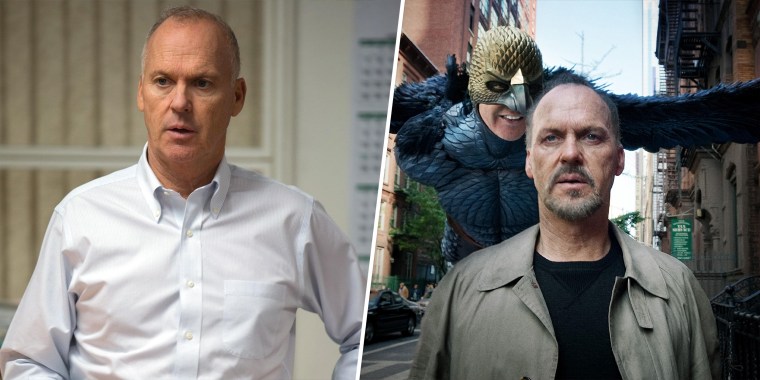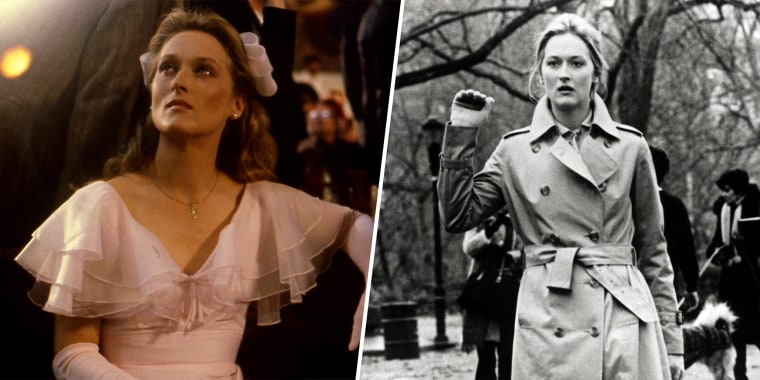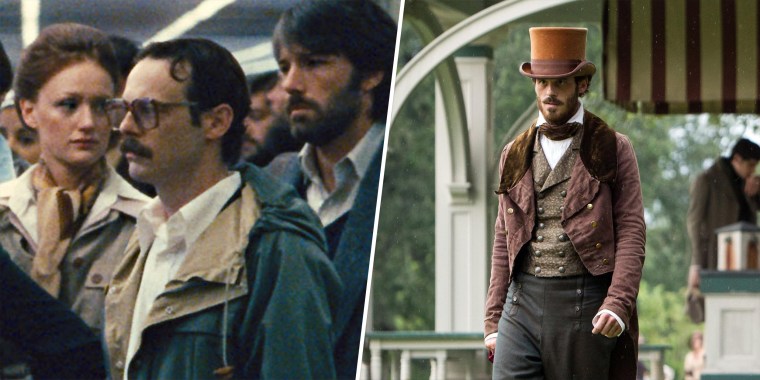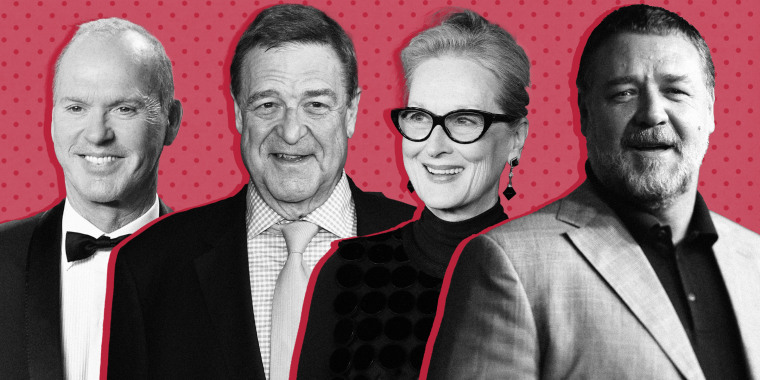Note: the years cited represent when a film was awarded an Oscar, not the year it was released.
Imagine the elation an actor must feel when a movie he or she has starred in wins best picture at the Academy Awards. Now, imagine doing it again the very next year. That’s the stuff Hollywood legends are made of.
Well, there is a small fraternity of actors who’ve pulled off that very feat, which has been accomplished since the early days of film. It’s been done by Hollywood titans you may know (Clark Gable, Walter Pidgeon and Christopher Walken) and thespians you may not (Rhys Williams, Edwin Maxwell and Gino Corrado).
“I think most actors would be thrilled to be in one best picture winner throughout their careers. How exciting it would be to be in more than one, and what a total thrill it would be to be in two, back to back,” Turner Classic Movies host Dave Karger told TODAY in a phone interview.
Prior to the 1950s, the accomplishment was more often than not achieved by actors in uncredited roles, while “Gone With the Wind” is responsible for more than half a dozen instances alone of actors going back to back. Wallis Clark, an actor who was uncredited in many films, appeared in the best picture winner in three consecutive years from 1935 to 1937. He missed out in 1938 and went back to back again in 1939 and 1940, yet was only credited in one of those five films. Not to be outdone, Harry Davenport pulled off a threepeat of his own from 1938 to 1940. So did Herbert Evans, from 1942 to 1944, in three best pictures in which he was uncredited.
Franklyn Farnum? Noel Neill? Robert Karnes? Mary Field? Eddy Chandler? They’re among the many who went uncredited in best picture winners in the ‘30s, ‘40s and ‘50s.
“In some cases, it speaks to the old Hollywood studio system where actors worked together a lot and made a dozen movies per year or more, in some cases,” Karger said. “And then in more recent decades, it speaks to certain performers who just consistently pick great projects, and elevate the films that they’re in.”
This quirky occurrence has happened sporadically over the years with more topline stars getting in on the act after the 1950s. The phenomenon has morphed from something generally featuring background actors into one that includes legitimate stars of the films.
Ian Charleson, John Gielgud and Richard Griffiths all starred in the 1982 best picture, "Chariots of Fire," and repeated the feat a year later in "Gandhi." That would usher in a dark period when no actor appeared in consecutive best pictures when Russell Crowe pulled off a spectacular feat. In 2001, he starred in best picture winner “Gladiator” and did it again the next year with “A Beautiful Mind.” What separated him from the pack, though, was he won best actor for each film.

Since Crowe's magical moment, an actor appearing in consecutive best picture winners has actually become somewhat common, occurring six more times, including 2015 when Michael Keaton was in "Birdman or (The Unexpected Virtue of Ignorance)," for which he won best actor, and "Spotlight" a year later. John Goodman is another huge star who went back to back, doing it with "The Artist" (2012) and "Argo" (2013).
Superstars are pulling it off, as are other recognizable or supporting performers. Actors like Guy Pearce in "The Hurt Locker" (2010) and "The King’s Speech" (2011), Michael Pena in "Million Dollar Baby" (2005) and "Crash" (2006) and Bill Camp in "12 Years a Slave (2014) and "Birdman" (2015) have also done it. There’s a chance it could happen again this year. David Strathairn, who starred in last year’s best picture winner, “Nomadland,” is also in one of this year’s nominees in the field, “Nightmare Alley.”
The fact this has become a common recurrence reflects how the film industry has changed.

“I just think it speaks to the different levels of Hollywood star these days,” Karger said. “You have some people who are, or were, at the top of their game, starring in beautifully shot, relevant films like ‘A Beautiful Mind’ or ‘Spotlight.’ But then you also have these kinds of stalwart character actors who really do add a lot to the films that they’re in.’”
So, how does this happen? Good casting? Luck? The stars aligning the right way?
Scoot McNairy, who was in best picture winners "Argo" (2013) and "12 Years a Slave" (2014), has an idea.
“Casting directors really know who to push for and who is really right for each role, so it goes without saying that it has everything to do with the casting directors and their talent is apparent in these films,” he said in an email to TODAY.
If you go deep inside the list, though, you can’t help but notice it’s dominated by men. Only a handful of women have done it. Meryl Streep is probably the best-known female to have accomplished it, in “The Deer Hunter” in 1979 and “Kramer vs. Kramer” the next year. She earned her first Oscar nomination for “The Deer Hunter” and won the first of three trophies for “Kramer vs. Kramer.” This disparity among men and women actors points to a larger issue.

“That speaks to the inequality in opportunities for actresses over the years, versus actors, Karger said. “And also, it speaks to the fact that, for whatever reason, by and large, the history of the Oscars, the list of best picture winners, is largely tilted toward movies about men.”
Very few people of color are on the list, either. Karger thinks that will change, though.
“That is the history of Hollywood. Great opportunities for non-white actors were few and far between in the early days of the movie industry,” he said. “And I think it’s only in the last couple of decades that we’ve seen that improve. And I do expect this list to, if it does grow, and it’s not going to grow a lot, just because it’s a very rare feat, but I do expect this list to become more diverse in the future decades.”

It remains to be seen if the list does become more diverse, but there’s no question about legacy. Being in movies that will go down in history may alter how you’re viewed and may up the ante for the quality of project an actor joins. McNairy says being part of award-winning films didn’t necessarily put any pressure on him for future projects.
“It’s the pressure that has been there since the first job I have ever had,” said McNairy, whose recent projects include the film “Lyle, Lyle Crocodile” and as spokesperson for TX Whiskey made in his home state of Texas. “When you’re on a set and you know how hard everyone’s working to be there, you have to deliver. I think feeling pressure comes with the territory, but working with such talented actors will always force you to learn more.”
The roster of actors who can say they’ve done this is not necessarily large enough to shoot the next ensemble drama, but it’s still represents a peculiar slice of history.
“I feel honored to have worked with such amazing filmmakers and talented actors,” McNairy said about his two best pictures. “To be honest, it wasn’t a surprise that they got the Oscars. I feel very lucky to have been a part of those films. All in all, working on movies with people I had always respected and looked up to was the most memorable part of those experiences.”
